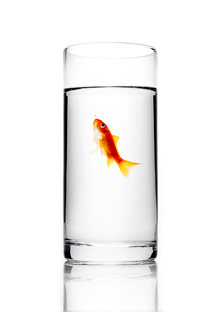Is Your Drinking Water Safe?

Photo: Jeff Harris Studio
A tough economy and environmental concerns over plastic have Americans laying off the bottle: Last year sales of bottled water were flat for the first time in more than two decades, according to Beverage Marketing Corporation, a research group in New York City. But is the stuff coming out of your tap safe? "America's drinking water is among the safest in the world," assures Mae Wu, an expert on drinking water safety at the Natural Resources Defense Council, a nonprofit environmental advocacy group. Still, she offers a few suggestions for those who want to be sure.
If your water comes from a public system: The only reason to test is if you're worried about the pipes in your house. (The EPA enforces regular testing and monitoring of public water supplies and requires that suppliers notify consumers of any serious contamination within 24 hours.) Lead can turn up in structures built before 1930 and, surprisingly, in those less than five years old, according to the EPA. The older buildings may have lead pipes; newer ones tend to have copper pipes held together with lead solder; some also have brass fittings. Both the solder and the brass can leach lead into water for up to five years. You can contact your local health department for information on testing for the harmful metal.
If you have a private well: The EPA recommends that you test for bacteria and nitrates yearly. These contaminants can enter your well through cracked ground pipes or in runoff from snow and rain. Depending on where you live, you may also need to periodically test for arsenic, radium, radon, and several other dangerous substances. These occur naturally in the soil and water in certain areas of the country (radon, for example, is an issue in northeastern states). Your county health department can tell you what to check for and direct you to certified testing laboratories, or you can call the EPA's Safe Drinking Water Hotline (800-426-4791).
Should a test detect lead or pesticides, a simple filter—either a pitcher with a filtering device built in or a faucet-mounted system (look for one that is NSF certified)—is all a healthy adult needs, says Wu. But if bacteria turns up or if you have children, are pregnant or elderly, or have a chronic disease, invest in a more thorough filter, such as a reverse osmosis system.
If your water comes from a public system: The only reason to test is if you're worried about the pipes in your house. (The EPA enforces regular testing and monitoring of public water supplies and requires that suppliers notify consumers of any serious contamination within 24 hours.) Lead can turn up in structures built before 1930 and, surprisingly, in those less than five years old, according to the EPA. The older buildings may have lead pipes; newer ones tend to have copper pipes held together with lead solder; some also have brass fittings. Both the solder and the brass can leach lead into water for up to five years. You can contact your local health department for information on testing for the harmful metal.
If you have a private well: The EPA recommends that you test for bacteria and nitrates yearly. These contaminants can enter your well through cracked ground pipes or in runoff from snow and rain. Depending on where you live, you may also need to periodically test for arsenic, radium, radon, and several other dangerous substances. These occur naturally in the soil and water in certain areas of the country (radon, for example, is an issue in northeastern states). Your county health department can tell you what to check for and direct you to certified testing laboratories, or you can call the EPA's Safe Drinking Water Hotline (800-426-4791).
Should a test detect lead or pesticides, a simple filter—either a pitcher with a filtering device built in or a faucet-mounted system (look for one that is NSF certified)—is all a healthy adult needs, says Wu. But if bacteria turns up or if you have children, are pregnant or elderly, or have a chronic disease, invest in a more thorough filter, such as a reverse osmosis system.



